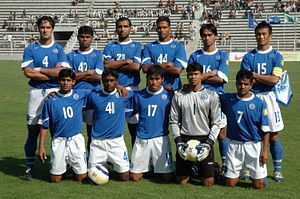My introduction to football was through the Argentine player Diego Maradona during the 1980s. Anyone in India who was at the prime of his or her adolescence could not have remained unaffected by the Maradona mania sweeping the nation in the wake of the 1986 World Cup.
As an avid cricket fan and player, I was mystified as to how the Argentinian icon came to occupy my mind as a young man who had never played football or even visited a football stadium. In the sleepy, rural town of Mokama, where I attended school, there were not many modern appliances. There wasn’t a television at home nor anywhere else in town. I don’t believe there was a football field either. Yet despite this, Mokama became gripped with football fever and Maradona became a more popular name than the then-young Prime Minister of India, Rajiv Gandhi. Even though nobody in my town saw Maradona play or read about him, he became a topic of discussion and football came to dominate our conversations.
Soon thereafter, television began penetrating our area and was fairly common by the time of the next World Cup in 1990. We still believed in the magic of Maradona at that time so it was a disappointment when we saw him being outmaneuvered by players from other teams. We felt shocked when Argentina failed to reach the finals that year. Yet, the aura created by the legend stayed with us.
Many Indians developed an interest in football during this era. In a nation crazy for cricket, Maradona helped ignite a new passion for football. In a sudden epiphany, many realized that India, a nation of over a billion people, did not play the world’s most popular game, and that India’s football team has never been one of the 32 teams that played in the FIFA World Cup.
Is our love for cricket responsible for the poor state of affairs of football in the country? Is the nation physically not fit to play this game of stamina? Is Indian society still so feudal that it cannot promote an egalitarian game like football? These and many other questions come to my mind and become all the more pressing during the World Cup, when it becomes evident that while the whole nation is spending sleepless nights watching match after match, Indians must cheer for some third nation and not India.
India qualified for the World Cup only once, by default in 1950 when all of its scheduled opponents withdrew. However, the All India Football Federation (AIFF), the apex body of football in India, could not send the team to play, missing a historic opportunity.
Since then, India has been struggling to register its presence in the world of football. Several of India’s neighbors have bested it at the game, a disappointing sign for a country as large as India, which should be able to field at least some talent. In South Asia’s regional championship last year, Afghanistan handily defeated India.
It is not that we Indians do not play football. We do. There are many regions in India where football clubs have been in existence for six to seven decades. India also holds many domestic football championships. Football may become more popular with the establishment of a new football league championship modeled on the pattern of the Indian Premier League (IPL), a popular league tournament for cricket. The idea of the latest initiative is to make football a viable career option for players and promote the game among the next generation.
But can this commercial venture lead to the creation of a world class national team? There is not much reason for optimism. While the formation of a national league may allow players to earn more money from the profession of football, this will not necessarily make them world class players, fit to compete with other nations. India will still struggle to defeat small, nondescript nations. While some Indian states such as Kerala, Goa, and West Bengal have been vying with each other to win national championships for decades, this competition has not produced players worthy of international stature.
Do Indian players lack the physical strength and agility needed to be world class players? This is a valid question. Cricket does not require the kind of physical stamina and resilience that football requires. This makes it easier to be succeed in cricket if one is not following a very strict fitness regime. This, however, is not true of football.
Every World Cup reminds us Indians of our limitations in sports, some of which may be inherent. However, if the government were to integrate sports into schooling and promote talent more, India’s chances at playing in the World Cup may increase.

































